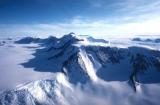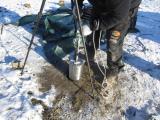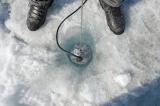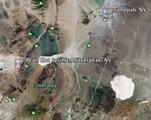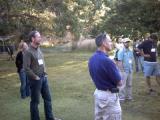
For the last few years, several students have gathered at the PASSCAL Instrument Center (PIC) for the IRIS Undergraduate Internship Orientation Week. In the IRIS Undergraduate Intern program, fifteen students fan out to conduct seismological research at thirteen
host institutions. The program is organized and run by Michael Hubenthal of IRIS. This year, the staff for the week-long orientation program included Rick Aster (NMT), Greg Chavez (PIC), Kent Condie (NMT), Katie Foster (U. of Wyoming & Program Alumnus), Bruce Harrison (NMT), Michael Hubenthal (IRIS), Hunter Knox (Sandia National Lab), Jesse Lawrence (Stanford University), William McIntosh (NM Bureau of Geology), Sandra Saldaña (Noble Energy), John Taber (IRIS), and Dave Thomas (PIC), along with Student Assistant Rob Anthony (NMT Grad Student & Program Alumnus).

